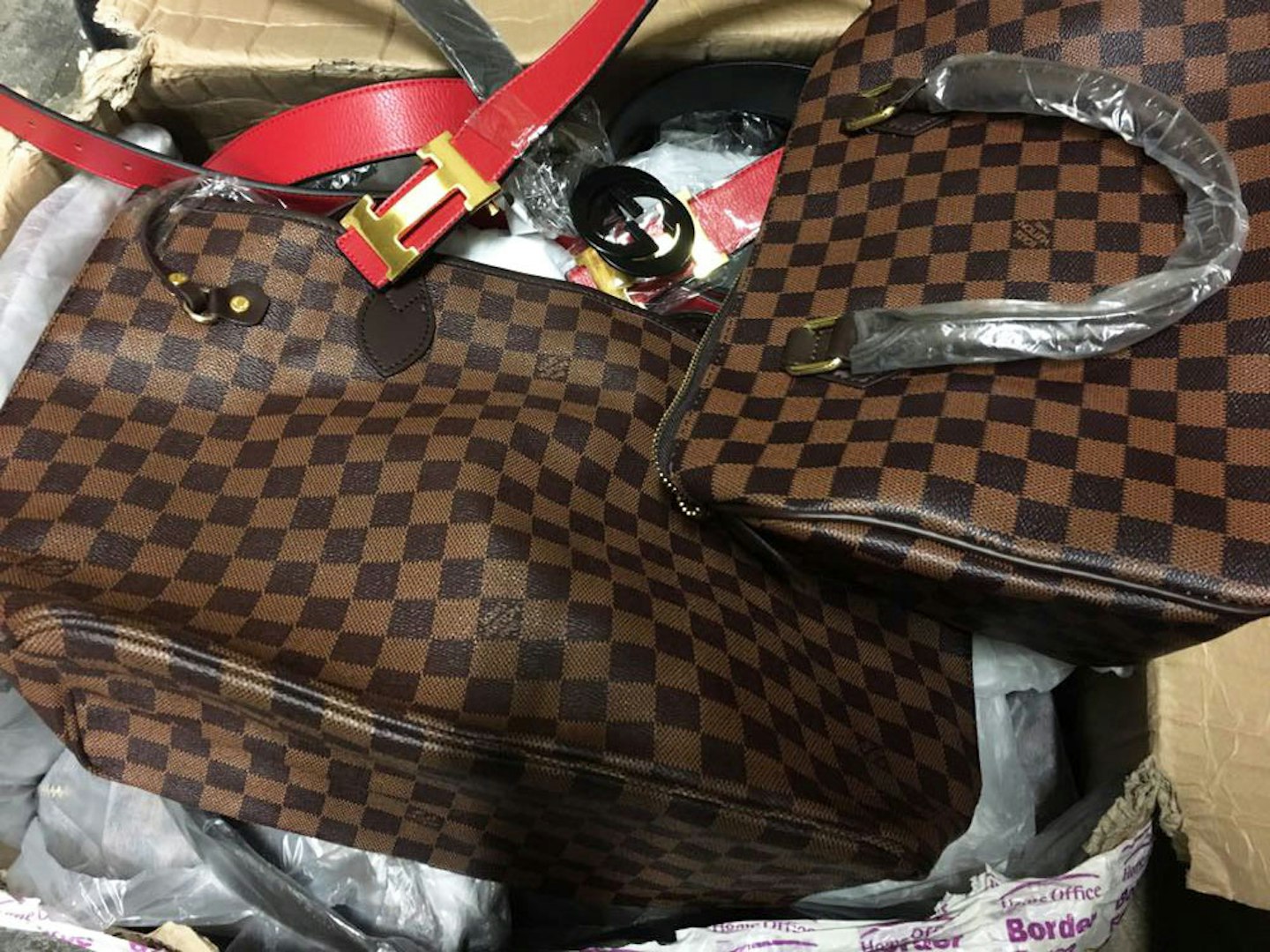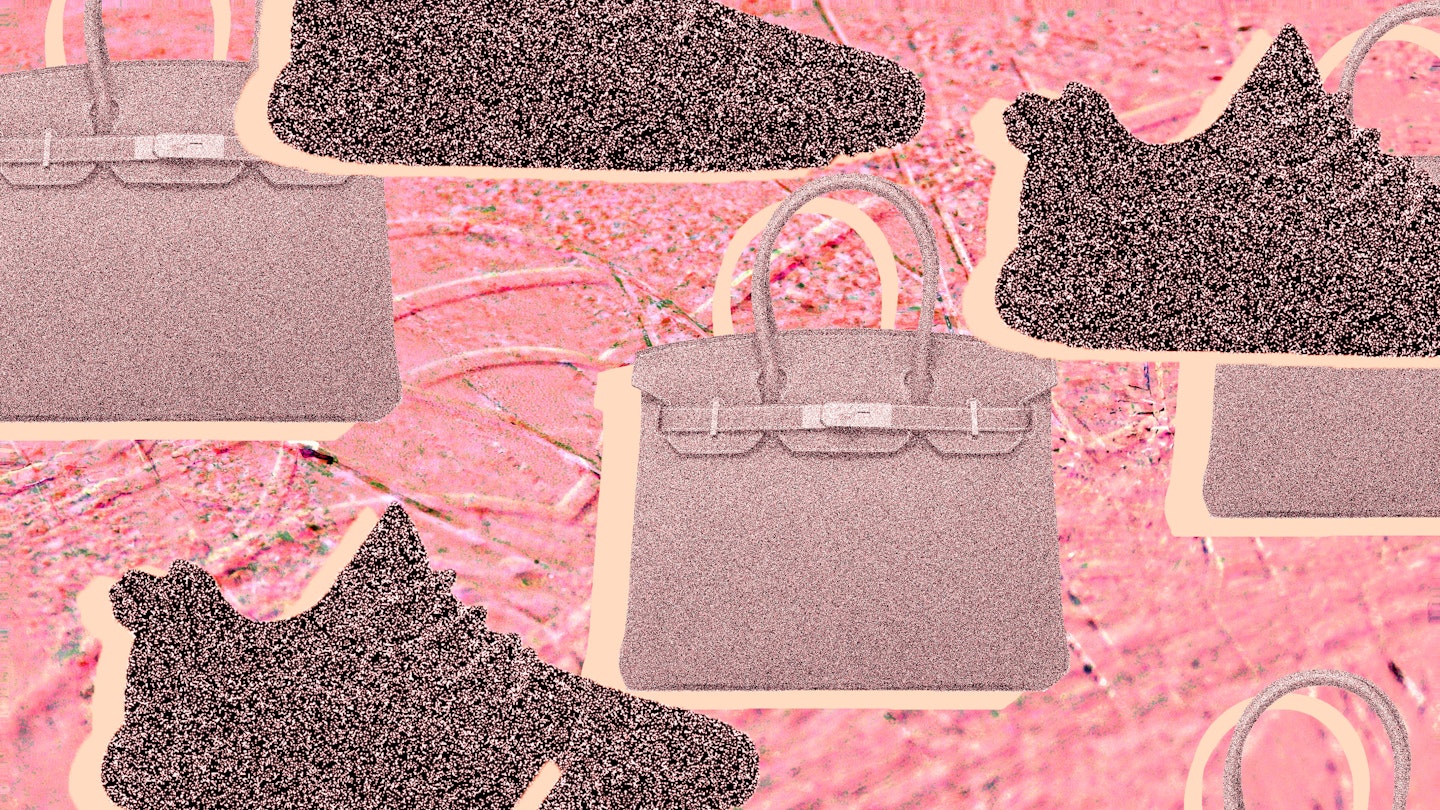‘How long have you been doing this?’ I ask Amarjit as we crawl alongside the runway at Heathrow in an old Volvo estate with a flashing blue light on top of it. ‘Oh about a hundred years’ he laughs ‘no, seriously, around 30 years’. I’m wearing a fluorescent yellow jacket and steel cap toe boots, ‘you need eyes in the back of your head when you’re around freight’ my guide says as we arrive at our destination: a giant hangar full of post and packages.
Amarjit works for Border Force and, for the last few decades, he has been searching for and seizing fake and counterfeit goods as they enter the country. In that time, he says, the game has changed ‘with the rise of eBay and Amazon it’s not a lot easier to buy goods from various sources so people don’t always know what they’re getting. Of course, there are some people who don’t care that they’re buying fakes…but there are some people who genuinely don’t know that what they’re getting is counterfeit.’ How often do you buy something online without ever setting eyes on the product itself?
‘Once’ Amarjit says ‘I bought a car charger for my phone and it started getting really, really hot. I was worried it was going to catch fire. I bought it online…it was probably fake’. However, when you think about ‘fakes’ you don’t generally think of counterfeit phone chargers, car parts or tobacco (which, Amarjit says, is very common), you think of designer goods: trainers, handbags and clothes. In the last year or so we’ve also heard more and more about fake make up.
We’re told not to buy fakes because it’s bad for the economy. If you buy a counterfeit the person you’re paying might not be paying tax and the brand which holds the copyright is being deprived of revenue. However, there’s more to worry about than economics. Earlier this year, Larissa Reynolds, from Warwickshire needed urgent medical treatment after a fake Kylie Jenner lip kit which she bought on Facebook caused her top lip to blisterand balloon ‘like a slug’.
Inside the hangar, we moved past row upon row of packages all waiting to reach their final destination after having travelled to Heathrow from all over the world. At the back of the building there is a locked cage. This, Amarjit says, is where counterfeit goods are stored until they can be checked by himself or one of his colleagues. I ask him what we can expect to find inside? ‘Oh, anything that can be copied’ he says ‘most commonly it’s handbags, belts, make up, electronics, toys, tobacco, alcohol and branded clothing labels which will be sewed into clothes here’. Alcohol?? I’m surprised ‘Yes, alcohol’ yes says nonplussed.
As he searches through the boxes I ask Amarjit what the most memorable thing he’s ever found was? ‘I’ve seen it all’ he says, particularly when it comes to drug smuggling. ‘If there’s a space…a drug smuggler will fill it. I’ve found white powder inside the empty spaces in between the layers of cardboard’. When it comes to counterfeit clothes and shoes, however, he says what stands out is ‘a pair of Nike roller skates which we knew were fake because the brand doesn’t even make roller skates.’ According to a BBC FOI requestthe number of counterfeits confiscated between 2014 and 2015 rose by 76%, with clothing and accessories making up almost a third of all goods seized.
According to a government report, published this year, the number of intellectual property law infringing items detained at UK borders in the year from 2016/17 was 2,000,000. The majority of these were being tobacco products coming from China and Hong Kong. Clothing, alcohol, footwear and make up also made up the top five types of item sized by border forces.
Amarjit takes a Swiss army knife out of his pocket, flicks it open with one hand and slices through the tape holding a benign large brown box together. It’s been flagged for him to look at because it has come from an area in China known to be a counterfeit production hotspot. The box peels open and we start to unpack the contents. Inside rustling plastic cases are counterfeit Louis Vuitton handbags of all shapes and sizes, Gucci belts and Hermes belts; the quality of the counterfeiting varies from item to item, some are convincing dupes while others are obvious knock offs. In this one box alone there is probably a few thousand pounds worth of fakes.

It’s tempting to dismiss warnings about counterfeits and tell yourself that ‘big global conglomerates make enough money as it is’, particularly when it comes to clothes and accessories. After all, fake medicine, tobacco or alcohol are a different kettle of fish because it’s obvious that counterfeit drugs or booze could seriously harm your health. ‘How much harm can a fake Dior saddle bag really do?’, you might wonder. I know I have. Indeed, the fake market and the genuine market coexist. Many people who would buy and can afford to buy a fake item would probably never be able to buy the real deal so, the argument that fakes take revenue away from copyright holders seems a bit shaky. But, the truth is that, aside from potentially containing dangerous material, the production of fake goods contributes to unethical labour (see modern slavery but, equally, it’s difficult not to wonder whether the conditions of workers manufacturing fast high street fashion are any better) and, in some cases, is thought to subsidise organised crime (although there isn’t actually as much evidence for this as you might think). 'Recently', Amarjit says as we pack the fakes back into the box, ‘we screened packages after they came off a flight which were found to have radioactive material inside them, when we opened them, they contained fake designer bags. So, some of the metal on the bags was radioactive.' I ask him to specify what exactly he means? If you buy a fake Louis Vuitton bag for £50 that’s probably that last thing you’d think could be wrong with it.
We moved through the cage and start to open up another, much smaller box. Inside it, like a Russian doll, are tiny boxes neatly packed. We open them up and find they contain Mac Matchmaster foundation. It looks exactly, and I mean exactly, like the real thing. How does Amarjit know it’s fake? ‘It’s been shipped from China’ he explains ‘it was flagged because we know that Mac is manufactured in Canada, not China. Look’ he says ‘the box even says “made in Canada”.’ Every single bottle of foundation in this box is completely fake; I estimate there around 200 of them.
Where was the counterfeit foundation headed? It was marked for delivery in London and, perhaps, it would have been sold privately or via social media like the fake Kylie lip kit bought by Larissa Reynolds. There’s no way of knowing exactly what the ingredients are or whether they would pass EU safety checks. Indeed, the concern about the safety of ingredients in fake make up reached fever pitch this year after trading standards found excessive levels of lead in fake MAC lipsticks. The products which prompted the warning, were seized by authorities from Paul Lamerton, who was selling them on eBay and Facebook, were found to have 300 times the legal level of lead in them. In court, magistrates heard that these levels of lead, if used regularly, could result in high blood pressure, cardiac, reproductive and neurological problems. Such levels of lead could also cause possible neurological damage to unborn babies if used by pregnant women, the court was told. The long term cost of buying fake make up can indeed be great.

The gated doors of the cage slam shut, Amarjit locks the padlock. We make our way back along the runway and out of the secure zone of the airport. What will happen to the counterfeit goods we saw today? ‘They’ll all be destroyed or sent to the copyright holder for testing’ Amarjit says.
There’s no denying that fake goods, especially make up, food, tobacco, alcohol and electrical items, are cause for alarm. The health risks are serious. But, with the stakes so low for manufacturers around the world and potential profit so high, it’s hard to see the black market going anywhere. For the foreseeable future Amarjit’s cage will remain filled to the rafters with boxes upon boxes upon boxes of counterfeits because, knowingly or not, we will try to keep buying them. We know it’s illegal, so why do we continue to do it? The cage in Amarjit’s hangar is, after all, only full because people have bought counterfeit items. Some may not have known what they were doing but others will have known, either way, everyone knows that buying fakes is illegal, so why do we do it? A study conducted by psychologists at Harvard Business Schoolfound that people buy fake products ‘to signal positive traits’ such as wealth. However, the effect of wearing a counterfeit actually has the opposite effect on a person’s psyche – it makes people feel ‘less authentic’ and increases a person’s ‘likelihood of behaving dishonestly’.
The cost of counterfeits to the economy is clear, faking is big business and the government doesn’t want untaxed revenue and income slipping through its net. The cost to people's health is also dear. What strikes me, though, is that these goods may also be costing us morally and ethically and that’s far harder to quantify.
You might also be interested in:
How Did This 31-Year-Old Aspiring Barrister Become A Victim Of Modern Slavery In Britain?
Follow Vicky on Twitter @Victoria_Spratt
This article originally appeared on The Debrief.
